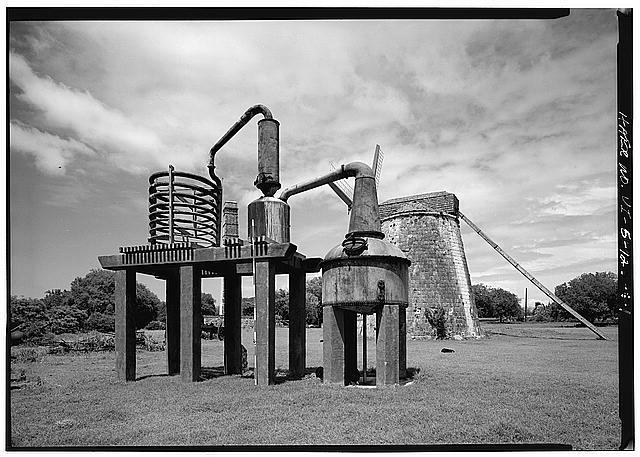Originally posted 17 September 2012
A recurring theme in the history of rum has been the tendency of distillers to evade taxes in any way possible, from hiding their barrels of liquor in caves or cellars to burying it in remote locations. At various times governments have turned to technology for solutions, such as the Distilleries Act promulgated in Jamaica in 1906. This was based on what seems like a sensible idea – putting a meter on every still so that the amount of liquid coming out was measured, and taxing that. So that nobody could cheat, the stills were to be locked so that there was no way of bypassing the meter.
Jamaican distillers cried foul, literally. The first products to come from a still as the wort boils (called feints or heads) are stinking, poisonous, and undrinkable, and at the end of the process the still emits another nasty liquid called tails. The meter on the still would measure either of these as alcohol, so distillers would pay taxes on something they couldn’t use, and unscrupulous still-men might be tempted to leave some of these harmful distillates in the liquor. Furthermore, it was proposed that the meter be attached to the still rather than to the end of the condensing coil, so any steam that escaped accidentally would be taxed as rum. The lock would cause another problem, namely that a distiller could not clean or repair his equipment without contacting an excise-man to give him access to it, and in Jamaica in the pre-telephone and automobile days, that could take days. Articles in the Jamaican press fumed at the injustice of this, noting that technically the Governor-General of Jamaica was the official in charge of the whole operation, and there was nothing in the law that specifically allowed him to delegate anybody else to do it. On April 14, 1906 the Jamaica Times fulminated that this section of the law was “sheer nonsense; what could the Governor know about the shape, dimensions, and parts of a locked still?” The Westmoreland Planters Association issued gloomy predictions of the ruin of the economy and lobbied the Legislative Council to oppose it – successfully, as it turned out, since rum was Jamaica’s major export. The revenue men had to continue their games of hide and seek with crafty distillers who did their best to conceal how much they had made and where they were storing it.
The picture here is of a still in St. Thomas – I couldn’t find a photo of a Jamaican still of this vintage. It is a stark and strange looking contraption, isn’t it! (Photo courtesy of Library of Congress)

